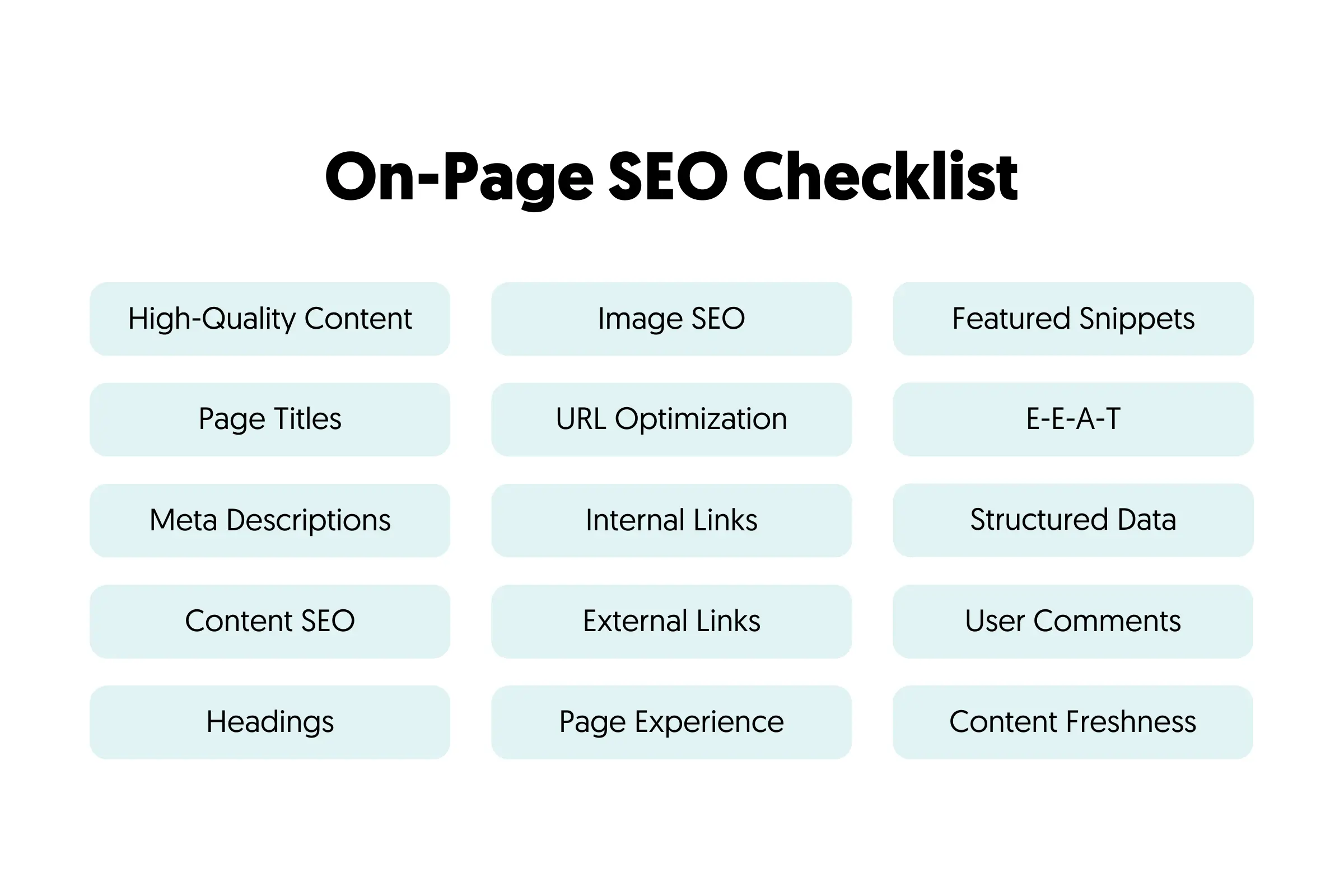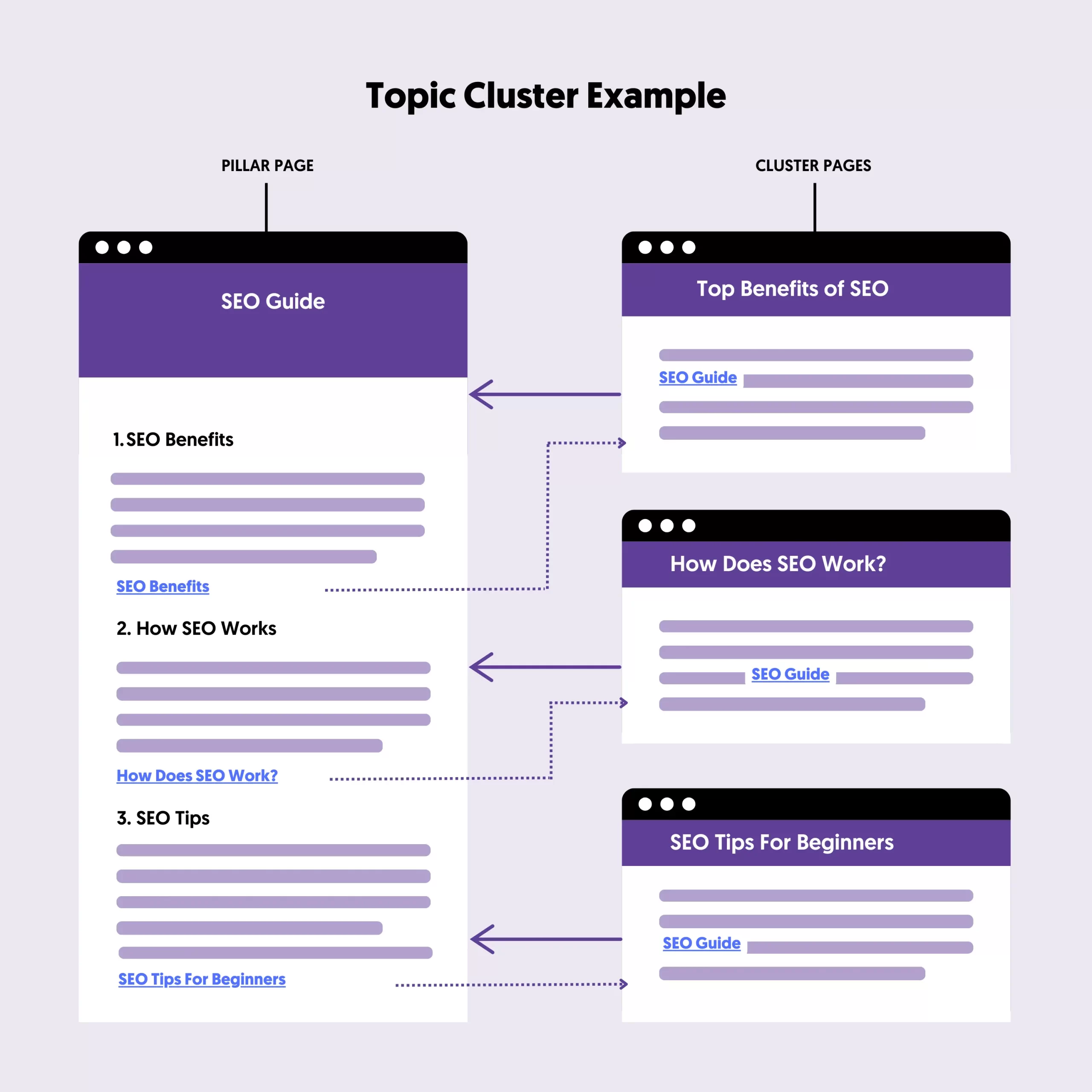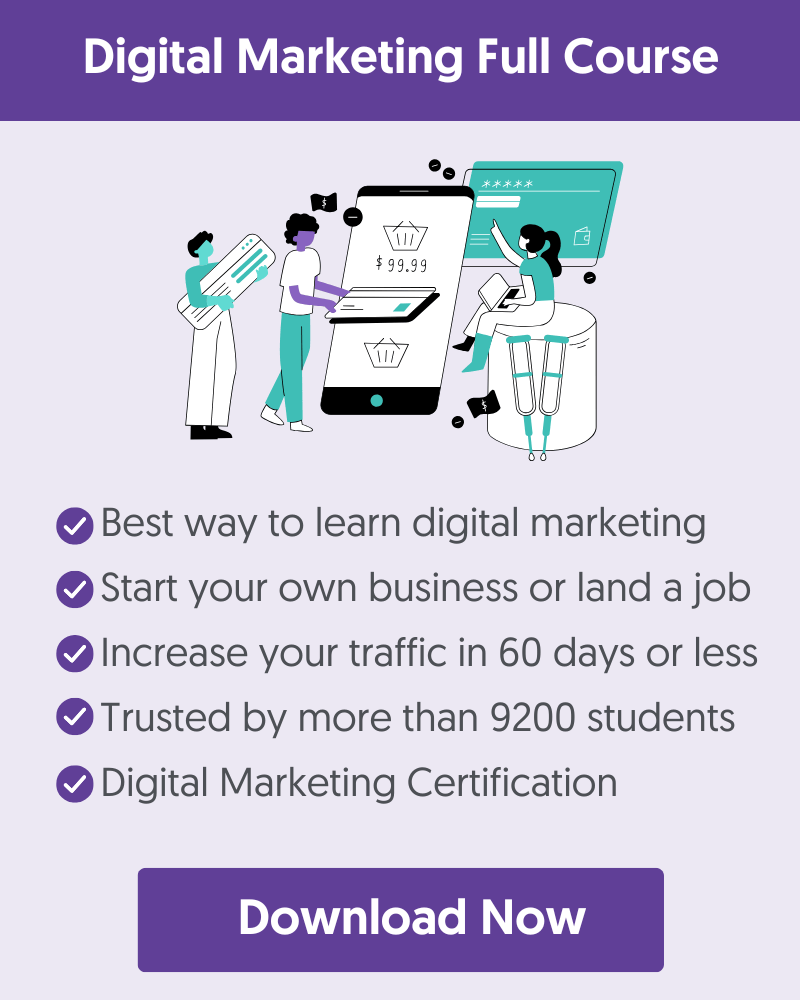What Is An SEO Campaign?
An SEO campaign is a coordinated and strategic effort to improve a website's rankings in search engines such as Google. This involves a series of activities, including identifying and targeting relevant keywords, optimizing website content, and building high-quality backlinks.
How To Launch An SEO Campaign
These are the seven simple steps to create a successful SEO campaign:
- Set Your Campaign Goals
- Find Keywords To Target
- Create Content Aligned With Search Intent
- Work On On-Page SEO
- Build Backlinks
- Monitor Your SEO Results
- Build Topical Authority
1. Set Your Campaign Goals
Before you start an SEO campaign, you should specify exactly what you want to achieve. Some valid use cases are:
- To increase visibility on Google for keywords that you don’t have any presence yet.
- To improve the rankings of existing pages for specific SEO keywords.
- To build more backlinks.
For example, before writing this guide, I set a specific goal: to achieve high Google rankings for the term ‘SEO Campaign.’
To achieve my goal, my plan included the following steps:
- Write a comprehensive guide on ‘How to build an SEO Campaign’ (the post you’re reading now).
- Once the post is published, add internal links from older posts (this will help search engines discover the new post faster).
- Promote my posts on social media (through Facebook Ads and Twitter).
- Publish new posts related to running an SEO campaign and link to this post.
- Build authoritative backlinks from related websites.
Every SEO campaign you run should be part of your overall SEO strategy. An SEO strategy can include one or more SEO campaigns.
2. Find Keywords To Target
Once your campaign goals are set, it’s time to make them more specific, and the first actionable step is to find the right keywords for your campaigns. You can do this by performing keyword research.
Your aim is to find keywords that are realistic to target and not waste your time on keywords you cannot achieve high rankings.
Here is an overview of the process to follow:
- Go to Google and type in keywords you believe are related to the topic you’re targeting.
- Analyze the top 5 websites with your favorite keyword research tool.
- Find keywords that match your campaign goals and are feasible to target.
Here is a step-by-step example.
Let’s assume you have a digital marketing blog (like the one you’re reading now) and want to begin an SEO campaign to target keywords related to ‘Digital Marketing’.
The first step is to go to Google and type in the phrase ‘Digital Marketing’.
Go through the results and open the first non-branded website in a new tab. In this case, it’s a post from HubSpot.
Scroll down the page and notice the type and length of the content. It’s a comprehensive post covering all aspects of ‘Digital Marketing’.
Copy the page URL and use your favorite keyword research tool to find which keywords the particular page ranks for.
Go to Semrush and enter the page URL. Look at the section that shows you the most popular keywords the page ranks for on Google.

Repeat the process for the first 5 pages.
Once you study the results carefully, you’ll notice three things:
- ‘Digital Marketing’ is a very popular search term.
- Only big and well-known websites are ranking on the first page of Google for this term.
- All results are long-form and detailed guides covering all aspects of digital marketing.
This information tells me that it would be difficult to rank high for this term. So, even If I start an SEO campaign to go after this specific term, it will fail.
What is the solution?
To continue my keyword research and find keywords I can potentially rank.
In Semrush, click on the KEYWORD MAGIC TOOL from the left menu
Since my website targets people who want to learn digital marketing (to promote our digital marketing academy), click ‘learning’ from the left menu. This will narrow the results to only include learning and digital marketing keywords.

Immediately, I can spot that ‘How to Learn Digital Marketing’ is a good candidate for my campaign.
It’s a long-tail keyword related to my goals, feasible to target, and with a decent monthly search volume.
Yes, the search volume is less than the primary keyword, but the chances of ranking for this term are much higher, increasing the chances of running a successful SEO campaign.
3. Create Content Aligned With Search Intent
The next step is to create high-quality, people-first content to match the search intent. In practice, this means:
Creating better content than is already available - To rank in Google's top positions, your content must be better than what is already available. Carefully examine the existing content and think of ways you can make your content better.
Always consider the user intent and what they want to see for a particular search query. For example, a comparison table might be a good fit if you’re writing a post comparing different tools.
If you’re writing a ‘how-to’ article, step-by-step instructions with images may be more appropriate than plain text.
Don’t take for granted that what is already ranking on Google is the best type of content. In the majority of cases, there are always things that can be improved if you approach the content creation process from a different angle.
Write in-depth content - Hundreds of pages probably compete for a first-page ranking for any chosen topic or keyword. Many studies have shown that in-depth content, known as pillar pages, tends to appear more frequently in organic searches.
This does not mean that writing more words will guarantee higher rankings. There is no ideal blog post length. But writing in-depth guides that make sense and cover all aspects of a topic will certainly help.
Be transparent - Don’t hide important information from users, but be transparent. For example, if you’re writing a blog post containing affiliate links, mention this at the beginning of the post, and don’t hide this info in your footer or small letters.
Make it clear to users who the post's author is and how they can find out more details or contact the author if needed.
Make sure you back up any claims in your content with real data or studies.
Demonstrate your authority and expertise - For certain topics and keywords, it is not enough to show who wrote the post, but it’s necessary to mention why users should trust the advice given by the author.
For example, you won’t be able to rank on Google for health-related topics unless the content is written and verified by certified experts.
E-E-A-T, which stands for Experience, Expertise, Authoritativeness, and Trustworthiness, are elements that are part of the Google ranking factors, and they directly or indirectly affect the position a website will appear in Google search results.
Be different - Writing the same content in different words is not the best approach. Instead, try to come up with a different angle from what is already on Google. This way, users will have an alternative resource to learn more about a topic.
4. Work On On-Page SEO
Once you’re done with content writing and before hitting the publish button, you must ensure your content is optimized for on-page SEO.
SEO-friendly content makes the job of search engines easier, and this can potentially translate to higher rankings.

Follow these simple SEO tips:
- Add your target keyword in the URL slug.
- Mention your target keyword in your opening paragraph.
- Mention your target keyword in your H1 Tag.
- Add related keywords in your H2 and H3 tags.
- Add long-tail keywords and related keywords to your content.
- Add images and make sure that you optimize the ALT Text.
5. Build Backlinks
No SEO campaign is complete without content promotion. Finding the right keywords and publishing awesome content are the first steps. The next step is building links to your content.
There are two ways to do this effectively:
- Build Internal Links (also known as internal linking).
- Build High-Quality Backlinks (also known as off-page SEO).
Build Internal Links
After you publish a post, find related pages on your website and add internal links pointing to the new post. Optimize the anchor text of your internal links to match the keywords you want to rank for.
Adding internal links from old posts helps new content rank faster.
Build High-Quality Backlinks
This is the process of building backlinks from other websites. Good quality backlinks act as ‘votes of trust’, and this helps the page rank higher in the search results.
Sending unsolicited emails to hundreds of webmasters begging for links is not the best way to get links. What you should do instead is to strategically reference other websites in your content and create a list of people who would love to promote your content. Get more details on our link-building techniques guide.
Don’t forget that other ways to promote your content besides link building include running paid campaigns on Facebook, sending out a newsletter, and informing your list of influencers.
6. Monitor Your SEO Results
One characteristic that differentiates an SEO campaign from other SEO tasks is that it has milestones and certain KPIs you can use to monitor its performance.
To be more precise, you can evaluate the effectiveness of your SEO campaigns using the following metrics:
- Ranking position in Google
- Number of visits
- Number of backlinks
- Number of social shares
- Number of comments
You can get this information from your Google Search Console account and Google Analytics SEO reports.
What is important to know is that the results of an SEO campaign you start now will be visible in 6 months or more. It takes a LONG time for new content to reach its final ranking position, so don’t rush into making conclusions too soon.
7. Build Topical Authority
The next and final step of your SEO campaign is to decide whether you need to publish more content related to the same topic to start building topical authority.
Understanding Topical Authority:
- Google's ranking algorithm doesn't just evaluate individual pages in isolation; it also considers the overall content context of the website where they're published.
- Websites recognized as authoritative sources on specific topics generally find it easier to rank for related keywords.
A strategic approach is required if you're targeting topics where your online presence is minimal or non-existent. Merely publishing a single article won't suffice.
Instead, create topic clusters of high-quality content to increase your authority in your topics. Here is an example of what a topic cluster looks like:

Key Learnings
An SEO campaign starts by setting specific, measurable goals and finding the right keywords or topics to target with your content.
Once you have this information, the next step is to create the content, optimize it for SEO, and publish it.
After you hit the publish button, you must allocate the necessary time to promote your new content using internal and external links.




